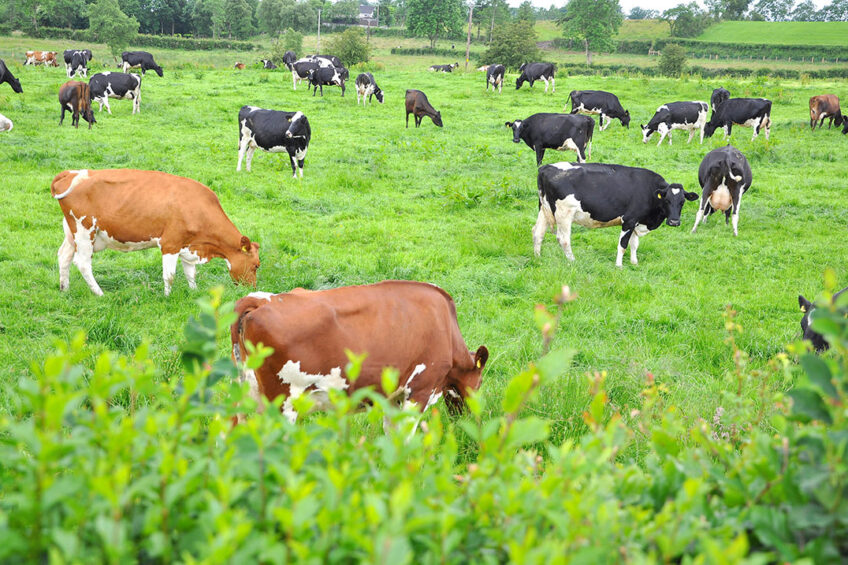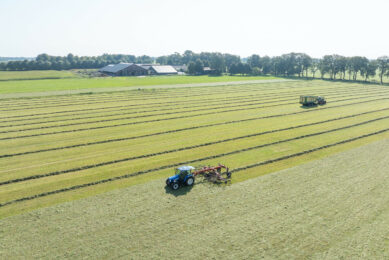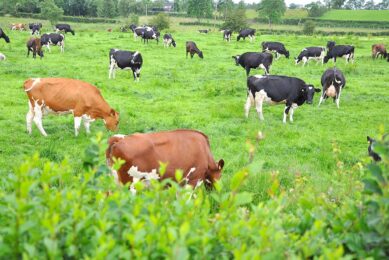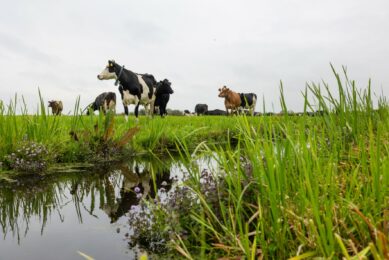How dairy farmers can look out for grass tetany

Milder spring weather provides opportunity for dairy farmers to turn out their cows early, but this is also the time to look out for grass tetany.
Grass tetany, or hypomagnesaemia, is caused by a lack of magnesium and is common in lactating cows grazing lush spring pasture.
Magnesium is vital to ensure correct nerve and muscle function, as well as bone formation. Hypomagnesaemia, which is a result of low blood magnesium, is often known as grass staggers or grass tetany. It is caused by an insufficient magnesium intake and is also a significant risk for the development of clinical or subclinical hypocalcaemia. Cows need a constant daily intake of magnesium, and a deficiency can kill them very quickly.
Deficient in magnesium
A sudden deterioration in weather conditions when cows are at grass can lead to severe outbreaks of grass tetany as more cows become deficient in magnesium. Farmers should be aware of the risks and take steps to prevent this disease, particularly during spring and autumn.
There are a number of clinical signs farmers can look out for associated with grass tetany. Cows with grass tetany become very nervous and excitable. They may show muscular twitching or walk with a staggering gait. In the worst case scenarios the cows can quickly go down, develop convulsions, become comatose and die. In many cases, due to the short duration of clinical signs, affected animals are frequently found dead.
During the few days before a cow develops grass tetany she will have shown a few signs that farmers need to keep an eye out for. These signs include a drop in milk yield, loss of condition and a change in temperament.
Technically speaking, magnesium deficiency alters calcium metabolism and thereby increases the risk of milk fever in recently calved cows at grass in spring, and especially in autumn.
Farmers are advised to call their veterinary surgeon immediately if they see cows with the signs of grass tetany or administer a treatment themselves. The most important factor is to treat the cow immediately. If one cow has grass tetany then the likelihood is that a number of other cows in the herd could have it, too.
Prevention
Taking blood samples from a number of cows in the herd is good practice to investigate if cows are low in magnesium allowing farmers to take preventative steps.
Prevention is mostly based on providing additional magnesium in the diet and reducing other risk factors. Cows cannot mobilise magnesium from body stores and therefore need a continuous daily supply of 30g of magnesium per cow per day (equivalent to 60g or 2oz of calcined magnesite per cow per day) especially during spring and autumn.
Adding magnesium to the diet or dusting onto pasture are highly effective methods of supplying additional magnesium. However, calcined magnesite can lower palatability and reduce intake when added to concentrates.
Also, if farmers choose to dust their paddocks they need to be aware that heavy rain can wash calcined magnesite powder off dusted grass and would, therefore, need to be applied again.
Magnesium supplementation of the water supply is effective when water intake from troughs is high. However, it is likely to be low during cold, wet spells, when the risk of grass tetany is highest, resulting in a reduced intake of magnesium.
Giving cows magnesium bullets orally will not necessarily restore blood magnesium levels to within normal ranges but do provide some protection for 4-5 weeks. In addition, some bullets may be lost by regurgitation, leaving those animals unprotected.
Using ad-lib mineral licks or blocks do not guarantee sufficient intake by individual animals. Some animals may consume little or none while others may take in excessive amounts, which can lead to scouring.
Feeding silage or hay after turnout to slow the rate of passage of food through the gut, thereby allowing increased magnesium absorption, is another good preventative measure.
When it comes to the fields, pastures rich in clover tend to have a higher magnesium content than grass swards and can also help.
Avoid the use of potash and excessive use of nitrogen fertilisers in spring as they can depress magnesium uptake by spring grass and absorption through the gut. The magnesium content of pastures may be increased by applying magnesia limestone (dolomite) when liming is required. However, the effectiveness of this method depends on the soil type being most effective on light sandy soils.










